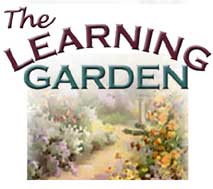
From Seed to Seed:
Plant Science for K-8 Educators
 |
From Seed to Seed: |
|
|
Activity 2: Seeds...Alive or Dead? Grades: K-8 Associated Lesson Topics:
National Standards:
Planting the Seed... Do you think that seeds are alive or dead? What do you think a seed is made of? Can you tell me what a seed does? Do all plants have seeds? Are all seeds the same size and shape? Have you ever eaten any seeds? What do you think it is about seeds that makes them so good for us to eat? Teacher Information: Seeds are amazing, living members of the plant world. They contain
all of the necessary information and resources to begin a new life. By
completing this activity, students will learn that a seed contains a baby
plant as well as the food supply that will help that baby plant grow.
Exploring the components of the seed first and then completing Activity
5 (Peanuts-R-Us) encourages students to understand how the different
parts within the seed grow to become a plant. Remember that some students
may be allergic to peanuts. Necessary Materials:
Procedure:
Epicotyl = the shoot (stems and leaves) of the embryonic plant Radicle = embryonic root Hypocotyl = connection between cotyledon and radicle Cotyledon = seed leaf Seed coat = protective covering
People eat seeds not only because they taste good, but also because of their nutritional value. Endosperm-the first source of food for the plant-is high in protein, carbohydrates, and vitamins. Students can research the dependence that humans have on seeds. How many different seeds do we eat? How have humans relied on seeds historically? How do other cultures use seeds in their diets?
Sources
Please click the BACK button on your browser to return to the course. |
||
|
Made possible by a grant from Oracle Corp. Copyright 2001, National Gardening
Association, Inc. For questions regarding this web site, contact Webmaster |